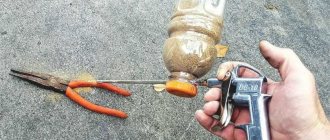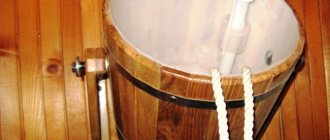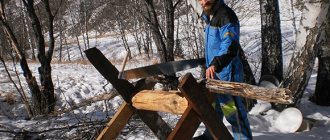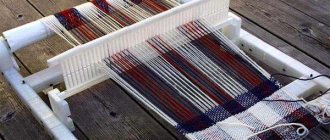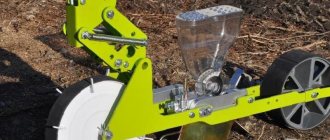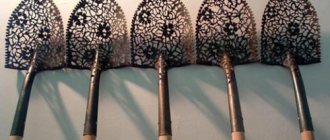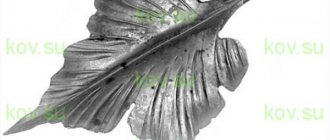Articles
All photos from the article
Modern materials and technologies have replaced traditional wood from many industries, but in some cases it remains indispensable. If you need antique-style utensils for a bathhouse or a country house, then you can’t do without wood. We will tell you how to make a wooden bucket with your own hands.
You can make a wooden bucket yourself.
Material
Plastic
The most popular option nowadays. There is constant demand for them, so their range is constantly increasing. They are very convenient for home use. Such buckets are quite environmentally friendly; you can store food in them and the bucket will not absorb their odors.
The food storage bucket is specially marked hdpe or pp, which means that they are made of food-grade plastic.
Important: In order not to get confused in the letters of the markings, when purchasing, look for an image of a fork or glass, this is the same as hdpe or pp. Buckets made of non-food plastic are marked pvc.
Protect this bucket from high temperatures and severe frosts.
Metal
A metal bucket is an indispensable thing when performing construction work. It can carry any liquids, bulk substances, etc. They have high strength, which allows them to be used even if damaged, dents or deformations.
These buckets are not afraid of temperature changes.
Tin buckets
Such buckets are universal; you can store food in them, use them for cleaning, carry bulk substances, and even dilute fertilizer. It can also be used as decoration if you choose a beautiful design. Yes, yes, now it is very easy to find a durable and beautiful bucket.
Enameled buckets
A very popular model among housewives. For its manufacture, thin sheet steel coated with glass enamel is used. You can store food and various liquids in them, because the enamel does not react with them. Typically, such a bucket is equipped with a lid.
They are very durable, do not corrode or oxidize unless damaged (enamel chips, for example).
Galvanized buckets
Many people still prefer galvanized buckets because of their versatility. In such buckets you can transport crops, and even store milk and food. It is important to know that it is not advisable to cook or boil anything in them and to store food for a long time.
This bucket is durable and does not corrode.
Stainless steel
Like galvanized ones, stainless steel buckets are universal. You can store food in them and use them during construction and in the garden. They are also called cast, because during manufacturing they are made without seams or joints.
Wooden buckets
Wooden buckets have become less and less used, but not entirely. For pickling, pickling and soaking, a wooden bucket is ideal.
Wooden buckets have a peculiar “appearance”. In their production, natural wood is used, and special technologies are used for joining, without glue, fasteners and “synthetics”.
The greatest use of such buckets was found in baths and saunas. They are made from linden or Altai cedar. Under the influence of bath steam, a stunning aroma is released, which adds to the mood during bath procedures.
Mounted models from canisters
If a do-it-yourself summer washbasin at the dacha made from bottles does not meet the needs of the family even with temporary use, you can install a larger model made from a plastic or metal canister, or even a bucket. To do this, cut or knock out a hole in the container into which the tap is installed.
If necessary, for better tightness, first install a squeegee into the hole knocked out in the canister, providing it with rubber gaskets on both sides. The position of the squeegee is fixed with nuts on the outer and inner sides of the canister. A crane is installed on the drain.
During installation, it is important to ensure the tightness of the joints
. If you choose a canister model, you should take into account that the drainage volume will be larger, which means you should think about drainage.
The following options are possible:
- a container for collecting liquid installed under the washbasin,
- drainage ditch,
- drainage channel to, etc.
If the site has permeable soil into which water drains easily, you can allow the liquid to soak into the soil. In this case, it is recommended to fill the space under the washbasin with gravel, crushed stone or expanded clay for better drainage.
Master class: miniature enamel bucket
Materials and tools:
- thin cardboard;
- acrylic paints;
- varnish;
- napkin with a small pattern;
- wire;
- thick threads;
- wooden bead;
- second glue, PVA glue;
- scissors;
- compass;
- round nose pliers.
The height of the bucket without handle is 3 cm.
Using a compass, draw two circles with a radius of 11 cm and 8 cm. Draw a chord of 7.5 cm along the smaller circle. For the arms, two parts measuring 6 mm by 11 mm, rounded on one side.
Cut out the bucket parts from cardboard. You can use boxes from tea, oatmeal, etc.
Use instant glue to glue the part along the side seam.
Lubricate the bottom with glue so that a little glue goes inside the workpiece, place it on the cardboard according to size and press firmly. It is best to use thick PVA glue or Moment-gel.
After complete drying, cut the cardboard around the bottom circumference.
Coat a thick thread generously with PVA glue and glue it as shown in the picture.
Bend the parts for the arms and glue them symmetrically.
Use a thick needle or awl to make holes for the arms.
Paint with acrylic paint. The thicker the paint, the better. For hardness, apply several layers to dry. To avoid brush marks, blend the last layer with a sponge.
The last outer layer can be any color.
Decorate the bucket with a design. You can glue a fragment from a napkin; to do this, tear out the design, peel off the top layer and glue it with PVA glue. If the background of the napkin does not match the color of the bucket, then make additional drawings.
Circle the rim of the bucket with black paint, imitate chips in places, and then apply spots of rust-colored paint on them.
After the drawing has dried, cover the entire bucket with several layers of varnish. You can use nail polish.
Make a handle.
Cut a 7.5 cm wire and bend it into an arc. Make a loop at one end with pliers, put on a cylindrical bead, and bend the other end at a right angle.
Insert the loop into the hole for the bow and tighten it.
Insert the second end at a right angle, use round pliers to make a loop and then install it in the hole of the bow and clamp it.
Fix the bead with glue.
If you paint it with silver, you get a galvanized bucket.
Bucket in the interior:
Enameled jugs are made in the same way:
Equipment for the production of galvanized buckets
The production line includes several types of equipment. To facilitate the production process, as well as the “joining” of equipment, individual assembly of the production line is used. The operator is only required to load the raw materials, and all actions for the further production of galvanized buckets are performed by the machine according to a given algorithm.
The cost of the production line is from 6 million rubles.
To save money, you can purchase the following types of equipment yourself.
Metal cutting machines
They are used for cutting metal sheets. The cutting is done automatically. The material is fed to the saw frame thanks to a hydraulic feed cylinder. In automatic mode, the sheet is clamped, the saw frame is lowered and raised, and the vice is opened.
An example of such an installation is the GH-4250 (Blv) machine. Cost - from 600 thousand rubles.
Stamping press
With its help, the walls and bottom are cut out of a sheet of iron. The equipment is large, weighing about 9-10 tons, so delivery requires careful organization.
An example of such a press is JH21-110t (Durmark). The dimensions of the unit are: 1.85mX1.49mX3.06 m. This must be taken into account when calculating the minimum size of the rented premises. Stamping is carried out under a pressure of 110 tons. In 1 min. the press makes 40-60 moves. You can order equipment for 2.1 million rubles.
There are other presses that differ in size and impact force. For example, the JH21-200T (Durmark) unit weighs 17 tons and presses with a force of 20 tons. Moreover, its price will be from 3.5 million rubles.
A press designed for leveling the walls of a bucket, processing the edges
Bending presses are large-sized equipment that bends sheets into a product of the desired shape.
The operating principle is based on the synchronized action of power hydraulic cylinders. The pressure force may vary. For example, in the MetalMaster HPJ-2580 vertical press brake it is 80 tons. The design is a system of powerful hydraulic cylinders; steel plates are used as a press. Thanks to the automation of the system for setting up the operation of the unit, it is easy and safe to operate. The cost is from 1 million rubles.
Serving machine
The device allows you to apply a relief image – “zigs” – to metal. When choosing, you should pay attention to such a parameter as the location of the shafts. Rollers are put on them to create a certain relief. In this case, the part is fixed with screws, and a roller acts on it under pressure. On the reverse side, shafts are pressed onto the steel, which rotate in the opposite direction relative to the roller. The result is a depressed relief. If after the first exposure it is not clear enough, the procedure is repeated. As a result, the cylinder corrugates.
An example of such equipment is Stalex ETB-12 - an electromechanical beading machine, the cost of which starts from 118 thousand rubles.
Folding machine
The unit allows you to connect (roll) a lock joint to seal a workpiece with a round cross-section. The part is affected by 2 rotating rollers. The rolling roller starts moving when the unit is turned on. The control is handled by the operator.
An example of such equipment is the electromechanical folding machine FPM-1300, the cost of which is about 110 thousand rubles.
Rolling equipment
The units are designed for bending rods. Without a machine it will not be possible to make handles for buckets. The device is equipped with shafts with electric drives.
The cost of mechanical equipment is from 120 thousand rubles.
Edge bending machine
It forms “ribs” to stiffen the bucket, allowing the product to be more durable and not deform under the influence of load.
To make the edge hard, a special paste is applied to it.
In total, the cost of the equipment will be from 4.048 million rubles, and this is when choosing the most budget-friendly type of machine. It is advisable to involve an experienced specialist in the production automation process.
Cost and profit calculations will help determine whether it is worth launching a line for the production of galvanized buckets.
On average, the production line produces about 4,800 buckets per month. Since the manufacturer is not interested in retail trade, the wholesale price is used for calculation. On average it is 150 rubles. per bucket with a capacity of 10 liters. As a result, the expected income will be 720 thousand rubles. per month.
Which tin to choose
Before making a pipe from tin, a suitable one is selected. For chimneys, thin sheet metal coated with a special compound is recommended.
The tin pipe removes smoke and increases draft.
Tin comes in black and white. The black type of material is thin sheet and cold rolled steel. Products are made from steel of various grades. The material is offered by manufacturers in sheets or rolls.
Tinplate is a material coated with tin on both sides, which is processed using electrolytic and hot tinning methods. This material is a low-carbon and thin sheet.
The processing method gives the steel rust resistance and ductility.
Production is accompanied by control of the composition of substances. The processing method and content influence the production of different grades of material.
The white type of sheet metal is treated to improve the surface's adhesion to varnish coatings.
Lacquered sheet metal is used. The varnishing process is used to protect surfaces from external factors.
Black and white type of material comes in the following types:
- single-rolled sheet is a product of low-carbon steel that is processed by cold rolling to the desired thickness;
- metal double-rolled after the first rolling procedure is subject to the second rolling and special lubricant, which reduces the thickness of the product.
The material is classified according to its degree of hardness and the amount of tin used.
Tin pipes have technically universal qualities.
Aluminum
From the middle of the 20th century. and to this day, aluminum utensils, including buckets, have reliably gained their position in the world market, despite the fact that serious wars have been waged against aluminum utensils. Aluminum was accused of increased toxicity. Although it, like chromium, copper and tin, reacts with oxygen and covers the dishes with a protective film. The older the aluminum cookware, the more reliable the protective layer, especially if you do not rub it with abrasive agents.
Note! A person can receive 50 mg of free metal per day without harm to health. When water is heated in an aluminum bucket, no more than 3 mg of aluminum is released.
In general, aluminum cookware is light, durable and looks aesthetically pleasing. Why you should buy aluminum buckets:
- low cost of the product;
- excellent thermal conductivity;
- corrosion resistance;
- easy to clean.
Note! Aluminum buckets should not be used to transport acids and alkalis.
Aluminum buckets are widely used in the dairy industry, and not only them, but also tanks for transporting milk from the farm to the milk processing plants. Aluminum buckets are available in volumes of 5, 7, 10, 12 and 15 liters. The most popular is a 10 liter aluminum bucket.
Advantages
With the advent of a large number of factory products for assembling galvanized steel chimneys, the need to make pipes with your own hands has decreased. However, homemade pipes allow you to reduce costs and choose the ideal diameter.
In addition, they are used to equip drains, so the ability to make pipes with your own hands will be useful in everyday life. Metal chimneys have the following advantages over others:
- A light weight. Smoke exhaust ducts made from homemade galvanized pipes weigh much less than brick or ceramic ones. Therefore, there is no need to equip a foundation, the cost of pouring which exceeds the cost of material and installation work.
- Fire safety. According to building codes, steel chimneys are completely fire safe. High quality metal can withstand heating up to 900 degrees, so it is suitable even for solid fuel stoves and fireplaces.
- Low cost. Chimney pipes made of steel are the most democratic way to organize smoke removal; the cost of installation is several times lower than the installation of brick and ceramic analogues.
- Easy to assemble. You can easily assemble a chimney made of galvanized steel with your own hands according to the instructions, thereby saving money spent on hiring professional workers.
Important! The effectiveness of smoke removal depends on the correct assembly of the chimney. Experienced craftsmen advise choosing a predominantly vertical configuration with the least number of turns. Each rotating element acts as an obstacle to the smoke, reducing the draft force.
How to make a galvanized bucket with your own hands
Rice. 7. Details of the cylindrical bucket pattern: 1 - bottom;
2 - side surface
with seam allowances;
surface C = 2-3.14-12.5 = 78.5 cm. To this calculated length we add 3 cm to form a seam fastening the development into a cylinder (1 cm on one side and 2 cm on the other), as a result we get the full length of the pattern side surface 78.5 + 3 = 81.5 cm. The width of the side surface of our bucket is equal to its height H = 25 cm. However, in order to secure the bottom with a seam and bend the top edge of the bucket by placing wire in it, we will add more to the width of the side surface 2 cm (1 each at the top and bottom), that is, the width of the sweep will be equal to 27 cm. This is the full width of the side surface of the cylindrical bucket. The pattern of the bottom and side surface of the bucket is shown in Fig. 7.
Bath bucket with plastic liner
You can make a doused bucket in the most primitive way, accessible even to people who have not previously had anything to do with wood. To do this, it is not necessary to become familiar with the basics of cooperage and learn to use special tools.
A couple of simple steps will help you quickly make a wooden container that costs a lot of money on the market:
- To begin, select an ordinary plastic bucket of the most successful color. For example, white or azure blue. Water in such a container will look very advantageous.
Next, remove the handle and any other parts present from the bucket. You don't need them at all. Don’t rush to throw them away; perhaps they will come in handy in the future.
Prepare 25–30 not too wide sanded wooden planks. Their exact quantity depends directly on the size of the plastic bucket.
Using super-resistant glue, attach the strips to the outer walls of the plastic container, imitating a wooden bucket. Coat the joints with transparent silicone.
- Cover the “wooden” container with a suitable varnish and strengthen it even more firmly with metal rings.
The wooden dousing bucket with a plastic liner is ready. Externally it is difficult to distinguish it from natural, but internally it meets all the requirements.
Required Tools
The soft and plastic material is easy to bend, so galvanized pipes are made using simple tools:
- Hand scissors for metal. With this tool you can effortlessly cut sheet metal, the maximum thickness of which is only 0.7 mm.
- Hammer with a soft striker. This role can be played by a wooden hammer or a metal tool with a rubber pad on the striking part.
To work you will need a wooden hammer
- Pliers .
Despite its softness, it is impossible to bend thin metal with your hands.
In addition to tools, you will need equipment:
- A workbench used to mark and cut workpieces.
- A calibrating element in the form of a steel pipe with a diameter of 100 mm or an angle with sides measuring 75 mm.
Important! The calibrating elements should be rigidly fixed, since they are used to rivet the joining seam of future gutters or ducts.
In the process of marking workpieces, you cannot do without measuring tools - a metal ruler, tape measure, square or marker (a sharpened steel rod with a hardened end).
Buckets for well
First of all, you need to understand that a bucket for a well should be of much higher quality than an ordinary household one. After all, it is constantly subjected to deforming loads, for example, when falling onto the surface of water or hitting the walls of a well during lifting. It is used much more often than a regular one, so the handle must be reliable. Well, don’t forget about the effect of water on metal, so everything should be made of stainless material. Buckets can be not only aluminum or galvanized iron, that is, metal, but also wooden and plastic. The wooden one is convenient because it is quite heavy and it is easy to scoop up water. It is quite durable if used properly. In addition, if the bailer breaks off the cable or chain, the bucket does not sink and is easy to get out of the well. The bucket is made from coniferous wood; they are least susceptible to rotting. The most common material is larch. The disadvantage is that it must always remain wet, otherwise the wood will dry out and cracks will form in the walls.
A plastic well bucket is more durable, but does not sink well when lowered into water. That is, it is quite difficult to scoop up water with them. But at the same time, it is impossible to drown it if it falls off the rope.
The most universal and most convenient is a device made specifically for a well. It has a cylindrical shape, is made of stainless steel, and most importantly, it is equipped with a special valve on the bottom that allows you to quickly fill it with water. When the bucket hits the surface of the water, the valve opens and liquid flows through the lower holes into the bucket; as soon as it begins to rise upward, the valve closes under the weight of the water. Such a device does not require deft throwing on its side to scoop up water. It can be used in wells of any diameter. The main thing is to secure it well at the end of the cable or chain, otherwise if it comes off, it will be difficult to get it out.
Video instruction
Galvanized steel pipes are an integral element of the drainage system of any home. Purchasing ready-made gutters is quite expensive. How you can make drainpipes yourself and thereby significantly save money is described in this article.
Buying ready-made elements of a drainage system is quite expensive. So, for example, a gutter made of galvanized metal costs about 100 rubles/m, a drainage funnel - 160 rubles/piece, a pipe with a diameter of 100 mm - 110 rubles/m, an elbow for a drainpipe - 110 rubles/piece. If you calculate the cost of all the elements necessary to equip a drainage system for the whole house, you will get a rather impressive amount. The natural question is how to save money? The answer is simple - do all the elements yourself.
Let's do the math. Galvanized iron is required for the drainpipe. The price for a sheet of 2500x1250 mm is 600 rubles. To make a pipe with a diameter of 100 mm, you need a strip of metal 340 mm wide - this is, in fact, the length of a circle with a diameter of 100 mm, plus bends. One sheet produces 7 stripes with this width. We get: 600 / 7 = 85 rubles.
for a pipe 1250 mm long, or 68 rubles/m - the cost of one meter of galvanized pipe. Save more than 60%! On other elements it will be even greater.
If the above calculations have convinced you of the need to learn how to independently manufacture galvanized pipes and other sheet metal elements, then let’s start learning. You need to start with the simplest thing - with pipes. How this is done will be discussed in this article.
Organizational aspects
To start production, you must follow the plan for creating and launching an enterprise:
- Select an organizational form. Can produce buckets. To register, you must contact the tax service, pay a state fee (800 rubles), present a passport and an application filled out in form P21001. In it indicate the OKVED activity code: 25.92 - Group “Production of containers from light metals”.
- Choose a tax system. For a novice entrepreneur, the best option is to choose a simplified system.
- Rent a room. When searching, you should take into account the dimensions of the equipment.
- Contact Rospotrebnadzor to notify about the start of activities. You should also obtain clarification from the SES regarding the organization of work on site, and install a fire alarm system in accordance with the requirements of the fire service. In particular, to ensure the safety and health of employees, the Machine Shop Sanitation Code (5160-89) must be followed.
- Equip the room. In addition to the main production facilities, it is necessary to purchase office equipment, furniture for office staff, organize a rest area for workers, and, if necessary, make repairs. In general, the cost of preparing for production, excluding the acquisition of a production line, will be about 180 thousand rubles.
- Purchase of raw materials. The process involves concluding contracts with suppliers. You can purchase steel sheets and zinc for melting, but it will be easier to purchase galvanized sheets for the production of buckets. Monthly costs for purchasing raw materials will be about 190 thousand rubles.
- Hire workers. At first, you will need to involve 3 workers, an accountant, and a production and sales manager. Salary costs, taking into account deductions, will amount to about 200 thousand rubles.
- Advertise the product. Information about the start of production should be published in print media and radio. The sales market for products is construction supermarkets and points selling household goods, farms, construction organizations.
When calculating fixed costs, you should take into account the costs of taxes, payment of utility bills, and the purchase of materials for maintaining equipment. In total, the amount will be about 430 thousand rubles. Profit—290 thousand rubles; The payback period for opening production is about 1 year.
Costs can be significantly reduced if you look for used equipment on popular Internet sites (Avito, Yula).
With a responsible approach to setting up production and a preliminary search for a sales market, you can achieve a stable profit after 2-3 months of work.
Galvanized
These buckets are an indispensable household tool. They serve:
Manufacturers produce galvanized buckets with a volume of 15 l, 12 l, 9 l, 7 l and 5 l. There is another variety - a 12-liter zinc bucket with a spout for use as a milk bowl on farms. It is made from galvanized sheet metal using special modern equipment, thanks to which:
- the buckets have only one seam, treated with a special sealing paste before stitching, which makes it airtight;
- handles are made of special reinforced wire;
- Strong steel rivets are used to attach the handles, which makes the bucket reliable when carrying heavy loads.
Video: making pipes
With the development of the construction market, the need for tin pipes is gradually decreasing. Today they are used more as integral interior decorations (see photo). Tin is a very thin sheet of steel that is susceptible to rust. That is why today, instead of it, galvanized iron is used to make drainpipes, interesting canopies over them, as well as small roofs over chimneys. But there are still areas where this material is still in demand, for example, for the manufacture of pipes for a samovar, cans, containers for paint coatings and chemical products, household products, information signs and more (see photo).
There are several types of tin. So, today it comes in canned or food grade, thin-sheet black, single- and double-rolled, as well as varnished. They first started making it many years ago, and they did it with their own hands. Sheets of material measuring 1 x 1 meter and about 2 millimeters thick were made using large hammers, after which they were left for some time in containers with lactic acid. Since that time, the technology of its manufacture has changed significantly and today special mechanisms are used for this. Making a pipe from such high-quality sheets is not difficult.
Enameled bucket with lid
Enameled bucket, with lid, 12 l. 2S28
Enameled buckets are an indispensable item in the household:
- they can hold water;
- collect and transport berries without fear of oxidation;
- they are suitable for milk, sour cream, cottage cheese in those farms where they are engaged in animal husbandry;
- You can use them to ferment cabbage, pickle cucumbers, mushrooms and other pickles.
What are the advantages of enameled containers:
- thanks to the enamel coating, they do not corrode and do not react with aggressive fillers;
- Enameled containers look very attractive. Manufacturers produce them in a wide range of colors. In addition, they are often decorated with printed designs, which cannot but please the eye;
- as a rule, they are equipped with lids and trays, which allows you to boil water, laundry in them, and even cook first courses in large quantities when necessary;
- The handle of the enamel containers is covered with a plastic braid, which is very convenient. When carrying heavy filler in a bucket, the handle does not cut into your hands;
- enameled containers with a lid are most often produced in a standard size - 10-12 l;
- Basically, the shape of enameled buckets is not very diverse: cylindrical and truncated cone.
They are very easy to use, wash well, and do not absorb foreign odors. Usually made from high-quality sheet metal with a thickness of 0.8 to 2.0 mm with double enamel coating, which is carried out, according to technical specifications, in two ways:
- Wet or slip method, in which enamel is applied to the walls of the container using a spray gun or by completely immersing the object in liquid enamel. The item is then dried in an oven and the procedure is repeated.
- Dry method, in which enamel powder is applied to the walls of a red-hot product. After this, the object is fired, a second layer of powder is applied and fired again.
Note! Buckets treated in this way last a long time; the only thing that threatens them is chips of the enamel coating. The thing itself is unpleasant, because it opens access to unprotected metal.
Outdoor washbasin for a summer residence: main types of purchased models
A garden washbasin or country sink should combine ease of use and affordable cost. When choosing a purchased model, you need to pay attention to the following parameters:
- the street model should fit harmoniously into the overall decor and the entire concept of the summer cottage;
- for frequent outdoor use, it is best to choose a wall-mounted washbasin with a large water tank;
- for rare, periodic use, it is advisable to give preference to small-volume washbasins, which will prevent water stagnation.
An outdoor washbasin can be portable or portable and stationary.
Such a device is usually located in the working area of a personal plot and can be represented not only by a primitive hanging tank, but also by a device with an increased level of comfort:
- a washbasin without a cabinet
or a so-called pour-over street washstand. This is the simplest design, represented by a capacity of three to five liters. Water is poured into the tank from above. The tank is closed by a lid, and a tap is located in the lower part or a special outlet float is installed. For drainage, a bucket or drainage layer on the ground is used. The best option is a durable plastic model. The most modern type is a plastic hanging tank with lids and a magnetic release; - A special feature of the plastic model on a stand
is the ability to attach it to a metal stand. You can firmly install such a device on the ground by pressing your foot on the bottom crossbar. Some models are characterized by the presence of such an additional element as a sink with water discharge directly onto the ground with a built-in drainage layer represented by fine crushed stone or gravel. The device can be installed between ridges or flower beds, as well as anywhere in the garden.
Assembly Rules
To properly assemble a chimney made of galvanized steel, you must first mark out the layout and laying of the pipe. Using this drawing, you should determine how many pipes are required and cut them into sections of the required length. Assembly is performed as follows:
Note! The smoke exhaust duct is installed on the roof at a distance of 30-50 cm from the ridge. To ensure the level of traction, the skate should be 50 cm higher. Incorrect placement on the roof can cause backdraft or wind backlash.
Tags
with your own hands from with your own hands from with your own hands With your own hands...with your own hands from with your own hands with your own hands from Handmade Handmade woman with your own hands. How to make a bucket How to make a bucket made from How to make a bucket made from How to make a bucket yourself make much you can make it do not Make it with your own How to make it How to make a bucket How to make a bucket from tin from tin galvanized tin without tin its own from tin from tin in tinsmithing. its rigidity. roofing tin. types of tin.
rebate pipe with a hammer bend the hoop ear the edges of the hammer hitting read the mandrel


